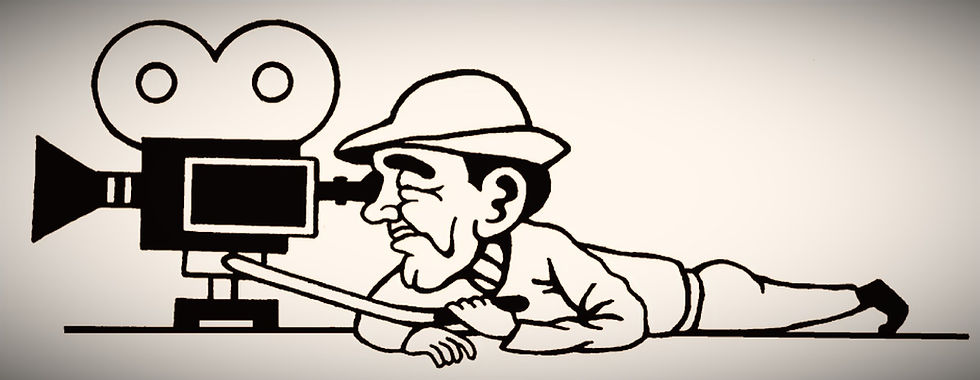Notes on Ozu
- Jarek Kupść

- Mar 19, 2020
- 3 min read
Updated: May 22, 2020
Can Yasushiro Ozu can be fully appreciated away from our understanding of Japan and its culture?
Perhaps we could decontextualize Ozu from the Western-imposed Zen approach to his films. After all, Tokyo Story has been named one of the top three best films ever made since the polls started – however silly the polling idea might be. Paradoxically, not many people (and critics) realize that Tokyo Story is a remake of a Hollywood film, Make Way for Tomorrow (1937) – albeit only superficially so.

My favorite Ozu is Ohayo (1959), in which he manages a perfect condensation of everything that life could be – with emphasis on the positive. In its deceptive simplicity, it rivals the best fairy tales – mixing hopes, struggles, and survival of the lower classes with so much gentleness and charm, it becomes almost a fanfare for the common man. Ozu does it without a hint of condescension, but with a lot of touching humor. He allows children to take the lead, and they go for it with wild abandon. It is as perfect a film as I’ve ever seen – but also a loose remake of his own silent picture from 1932, I Was Born, But...

It always puzzles me why some critics choose one Ozu over another, raving about Tokyo Story, but neglecting perfectly crafted gems like The Flavour of Green Tea Over Rice. It must be said that Ozu, like Kurosawa or Mizoguchi, has never made a film that was less than good. Even their infrequent stumbles are noble efforts, which is more than you can say about most filmmakers.
Interestingly, I’ve rarely seen an Ozu film with any form of violence propelling the story (granted, I haven’t seen them all). Tarkovsky has violence, and so does Bergman. Kurosawa is the master of meaningful violence on film. But Ozu, for some reason, opted out of this very cinematic emotion. True, I Was Born, But... has school bullies and a dad spanking his child. But when Ozu loosely remade it in colour (and sound) as Ohayo, not much of that is left... Dragnet Girl (1933) is ostensibly a gangster picture, but it offers the most gentle depiction of a criminal life I've ever seen. A Hen in the Wind (1948) features probably the most violent occurence in an Ozu film – an abusive husband throwing his wife down a flight of stairs. It comes unexpectedly, and it is truly shocking.

But, by and large, Ozu's films refuse to accept direct violence as a dramatic device. His is a cinema of gentleness and understatement. And, of course, emotional suppression. There are instances of unbearable tension and anger, but they are mostly directed inward, and frequently occur off screen. As if Ozu set out to prove one can craft compelling narratives out of what happens in-between moments of great passion.
This is also true for love – scenes of embraces or tender kisses between characters in Ozu’s films are as infrequent as they are restrained (Dragnet Girl). Yet, there is love, great passion and anger in every picture of his I’ve seen. How he managed that, I will never know. Perhaps that magic should not be dissected.

The pervasive opinion is that Japanese cinema can be mystifyingly hermetic. I’m not sure this is a valid argument, since the noted scholar Donald Richie is very clear about what is and what isn’t hermetic in that culture. I would highly recommend Japanese Cinema: Film Style and National Character, in which Richie beautifully explains the difference between “comprehension” and “understanding” of a film. In Western cinema, generally, the action is told efficiently so anyone can comprehend the plot. In a Japanese film, the pace is slower, sequences linger on for a while, allowing the Japanese viewer to fully understand the mood of the action, which is as important as the plot. In fact, many an Ozu film is seasonally-titled. In Japan, daily life tends to be more interconnected with nature. So, for instance, if the title is “Late Spring,” a Japanese viewer understands it means “before the storm” (monsoon season). Also, it may refer to the sexual connotations of the Japanese iris blooming at that time, as well as to the more literal “late spring” of the protagonist’s age.

I can write about Ozu till the Kobe cows come home. So I’ll just leave you with my condensed impression:
An Ozu film is like a Bonsai tree – it is a perfect, meticulous miniaturization of life, encapsulated for our convenience, but also demanding respect for its delicacy and beseeching consideration – some details are rendered so small, so elusive, you really have to pay attention to get the full experience.



Comments